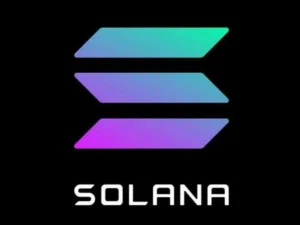Solana (SOL) has demonstrated remarkable resilience in 2025, rebounding from previous market downturns and establishing itself as a leading blockchain for Web3 applications. As of June 10, 2025, SOL is trading at $157.98, reflecting a 4.18% increase in the past 24 hours. Earlier in the year, Solana reached an all-time high (ATH) of $295.40 on January 19, 2025, driven by renewed investor confidence and macroeconomic factors. However, market corrections and external influences have since moderated its growth trajectory.
Institutional Adoption and Regulatory Impact
One of the primary drivers of Solana’s price movements has been its increasing institutional adoption. The Bitcoin halving event in 2025 contributed to a broader crypto market rally, benefiting SOL alongside other major assets. Additionally, Solana’s proof-of-history (PoH) consensus mechanism has continued to attract developers and enterprises seeking high-speed, low-cost blockchain solutions.
Despite these positive developments, Solana has faced regulatory scrutiny, particularly in the U.S. and European markets. While the network has largely avoided the legal challenges faced by some competitors, ongoing discussions about decentralized finance (DeFi) regulations have introduced uncertainty for investors. Nevertheless, Solana’s ability to maintain network stability—after years of intermittent outages—has reinforced its credibility among institutional players1.
Technical Indicators and Market Sentiment
From a technical perspective, Solana’s price movements have been shaped by key indicators. The 50-day moving average has been declining, signaling short-term bearish pressure, while the 200-day moving average suggests a weaker long-term trend. The Relative Strength Index (RSI) at 54.99 indicates neutral momentum, meaning SOL is neither overbought nor oversold. Meanwhile, the MACD histogram remains in negative territory, pointing to short-term bearish sentiment, though a bullish crossover could signal a reversal.

Market sentiment, as reflected in the Fear & Greed Index (60–65), suggests cautious optimism among investors. While Solana has demonstrated resilience, traders remain watchful of external factors that could influence its trajectory.
Short-Term Price Forecasts
Analysts predict that Solana will trade within a range of $121–$495 in 2025, with an average price target of $500. CoinCodex projects a modest decline to $173.90 by mid-2025, reflecting the impact of market corrections. However, a six-month projection is more optimistic, forecasting $290–$515 by the end of the year, driven by increased adoption and favorable macroeconomic conditions.
Short-term resistance is expected around $160, while support lies at $140. A break below $140 could test $120, whereas a bullish reversal above $173 may target $200.
Long-Term Outlook and Market Trends
Looking beyond 2025, Solana’s price trajectory remains promising. Analysts estimate that SOL could reach $644 by the end of 2026, assuming continued institutional adoption and favorable market conditions. By 2030, Solana’s price could surge to $1,250, driven by widespread cryptocurrency adoption and regulatory clarity.
Solana’s expansion into DeFi, NFTs, and blockchain gaming further strengthens its long-term prospects. As financial institutions seek efficient blockchain solutions, Solana’s role as a high-speed, scalable network may become increasingly vital.
Competitive Landscape and Emerging Challenges
While Solana maintains a strong position in the market, competition from emerging cryptocurrencies poses challenges. A new Ethereum-based token, $DAGZ, has gained traction, leveraging artificial intelligence and community-driven enthusiasm. Some analysts speculate that $DAGZ could challenge Solana’s dominance in the DeFi sector, though Solana’s established infrastructure and institutional backing provide a competitive edge3.
The introduction of the first global Solana ETF in Brazil also marks a significant milestone for institutional adoption of SOL, offering investors a regulated and accessible way to gain exposure to the asset. This ETF provides a structured investment vehicle that can attract both retail and institutional players seeking diversified crypto exposure without directly managing private keys or engaging with decentralized exchanges. Given Brazil’s growing interest in cryptocurrency and blockchain technology, this move could enhance Solana’s presence in Latin America, further solidifying its role in the global financial ecosystem





